By Daniel Oppenheimer
—
A few weeks ago, I hosted a conversation with Professor Latinx — English professor Frederick Luis Aldama, for those not in the know — about his work on and interest in comic books. As an academic, Aldama has made Latinx representation in comics a pillar of his scholarship, and he’s founded projects like the Latinx Pop Lab to foster and promote groundbreaking creative and intellectual work in and around Latinx pop narratives generally, from comic books to animation and gaming.
But his interest goes beyond the academic: Aldama is also an award-winning author and editor in the comic world. Our conversation (which you can listen to here) focused most on his latest series, Pyroclast, part of the Thirteen Origins, a new comic book universe about a group of Mexicans and Mexican Americans who discover they are chispas, able to wield impossible powers.
To celebrate Pyroclast’s publication, we asked Aldama to recommend several of his favorite comics, all listed below. Whether you’re new to the world of graphic storytelling, a longtime comic fan, or just looking for gift ideas, one (or all?) of these should do the trick. And if you’d like more reading lists or recommendations along these lines, let us know! The Extra Credit inbox is officially open to requests.

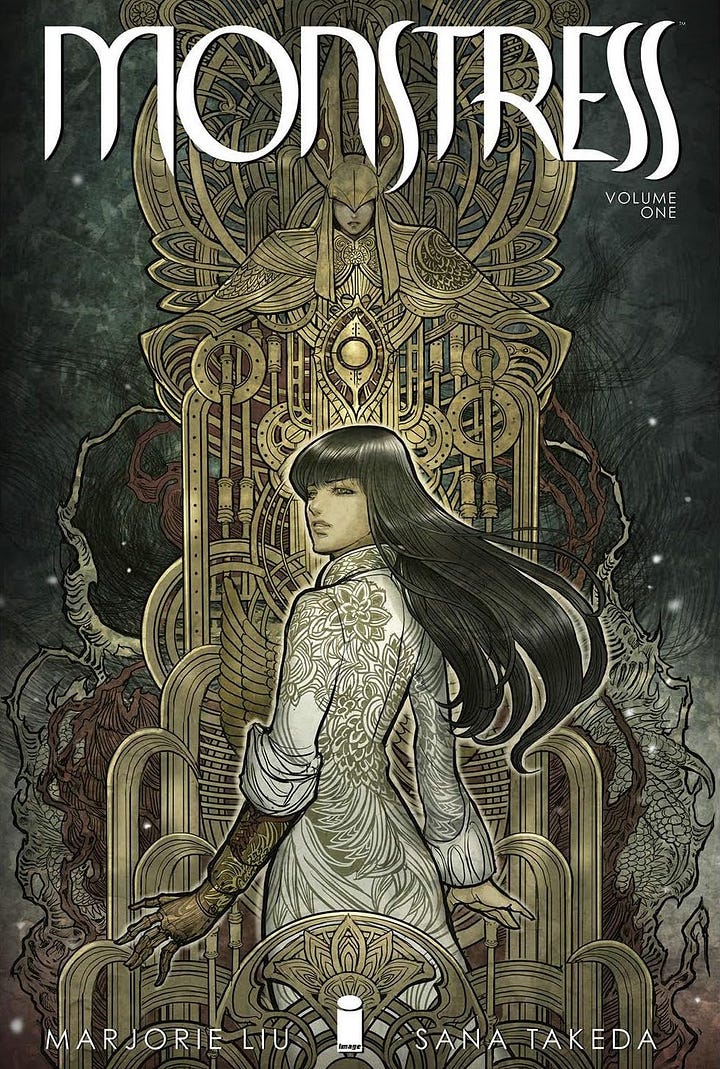

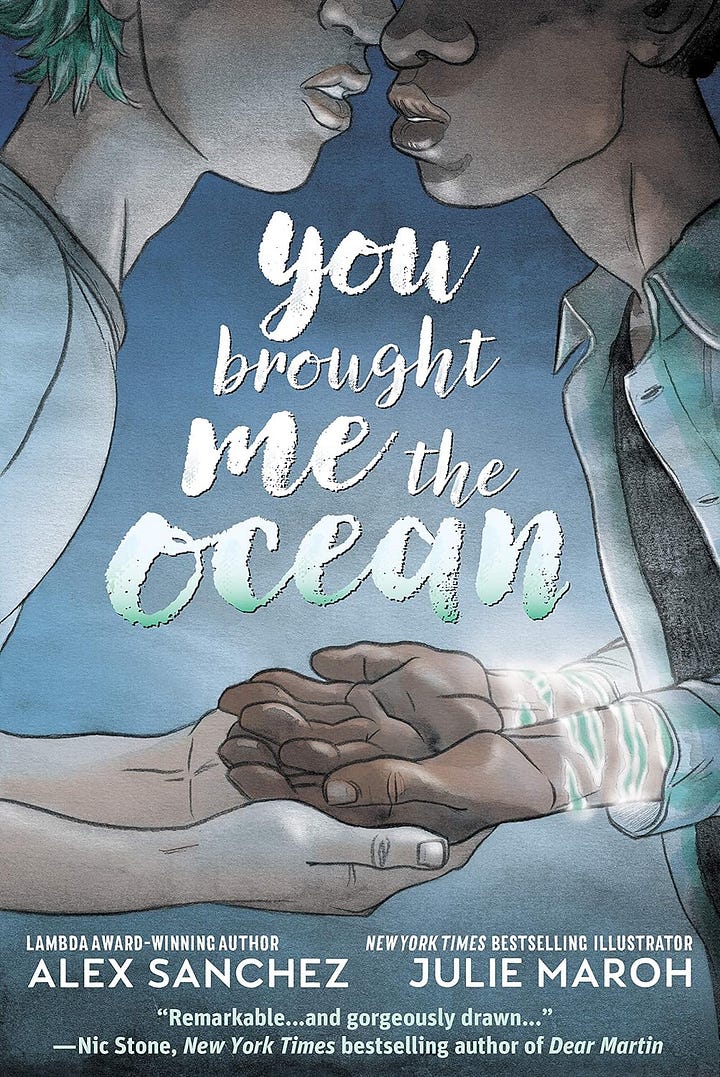
The Low, Low Woods by Carmen Maria Machado, art by Dani
“When your memories are stolen, what would you give to remember?”
In Shudder-to-Think, Pennsylvania, a mysterious illness is destroying the memories of the afflicted, and teenage best friends El and Vee are the latest victims. But as they dive into the mystery behind their lost memories, El and Vee are thrown into a “gloriously unnerving tale of monsters, sinkholes, witches, and yearning teenage dreams” where “humans can be the worst monsters” and dark magic is a kind of karma (Publisher’s Weekly). Machado has a well-deserved reputation as a brilliant and effective horror writer, and The Low, Low Woods pairs her talent with appropriately eerie art by illustrator Dani.
Monstress Vol. 1 by Marjorie Liu, art by Sana Takenda
In an alternate 1900’s Asia, a teenage girl is struggling to survive the trauma of war. She also shares a mysterious psychic link with a monster of tremendous power that will transform them both — and make them a target for both human and otherworldly powers. Pair that story with the gorgeous (and disturbing — you’ve been warned!) visuals of Takeda, whose illustrations capture a kind of art-deco-inspired steampunk horror, and you get what Neil Gaiman calls “a beautifully told story of magic and fear.”
My Favorite Thing is Monsters by Emil Ferris
With visuals inspired by B-movie horror and pulp monster magazines, My Favorite Thing is Monsters is the fictional graphic diary of 10-year-old Karen Reyes, who lives in 1960’s Chicago and draws herself as a werewolf-vampire hybrid monster. An amateur sleuth, Reyes is trying to solve the murder of her upstairs neighbor, holocaust survivor Anka Silverberg. Her investigation eventually takes the story back to Silverberg’s life in Nazi Germany as the past, present, personal and political converge.
You Brought Me the Ocean by Alex Sanchez, art by Julie Maroh
A collaboration from the Lambda Award-winning author of Rainbow Boys and the bestselling illustrator behind Blue is the Warmest Color, You Brought Me the Ocean is both a coming-out romance and an updated origin story for Aqualad. Living in Truth or Consequences, New Mexico, Jake Hyde longs for the ocean — and the courage to come out — even as his friends and family encourage him to stay near home and play it safe. But “in a universe with superheroes and supervillains, Jake must decide who’s he going to be” in this “worthy, diverse addition to the DC Universe” (Kirkus).
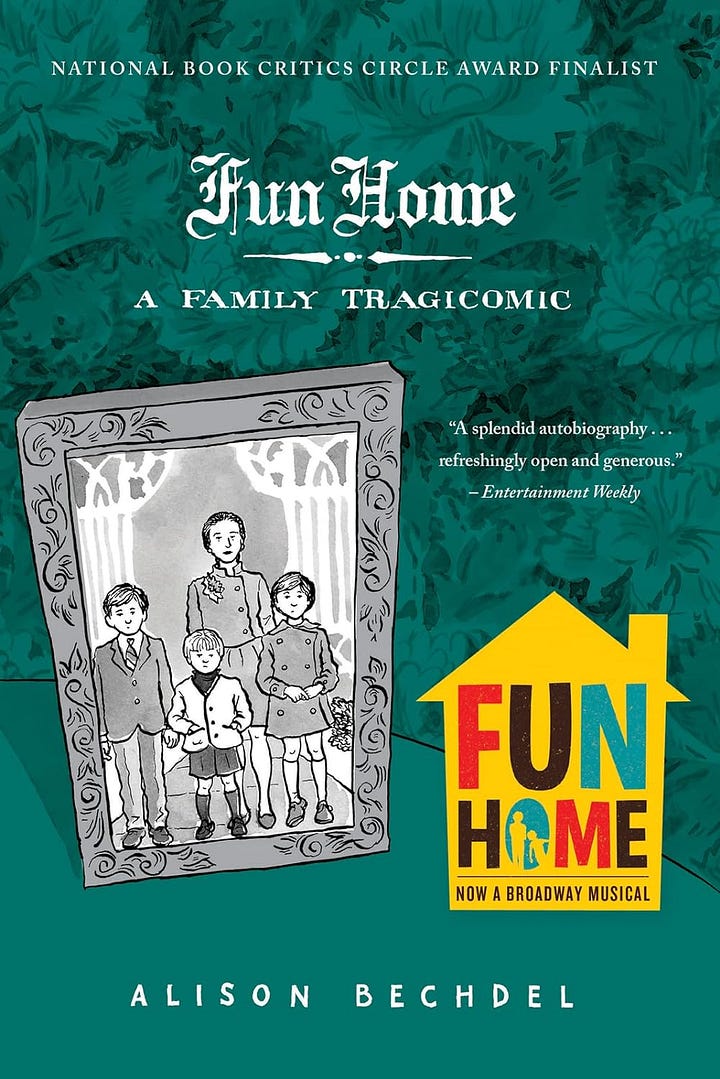
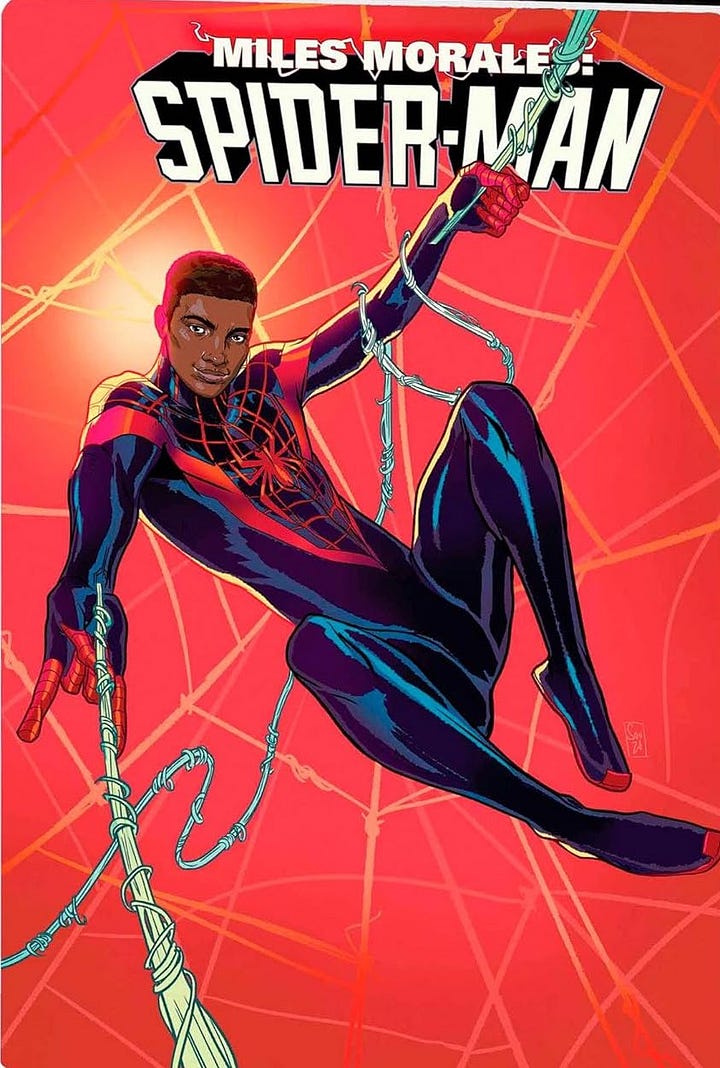

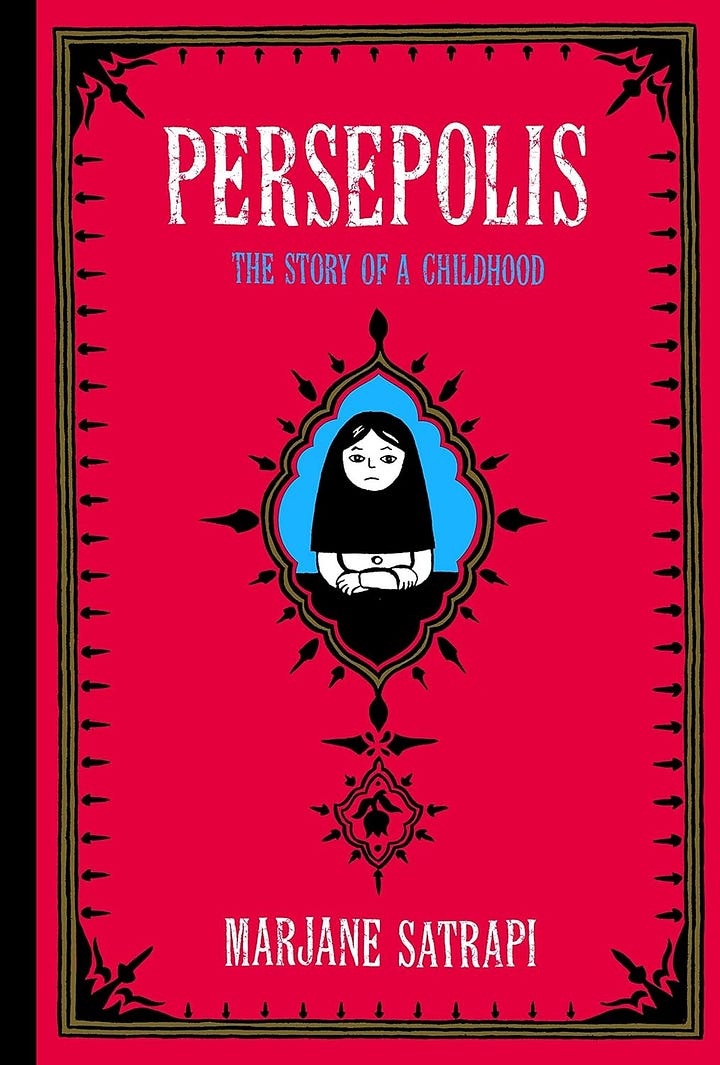
Fun Home by Alison Bechdel
You’ve heard of the Bechdel Test, but have you read Bechdel’s breakthrough graphic memoir / critically acclaimed queer epic, Fun Home?
A work of remarkable subtlety and generosity, Fun Home explores Bechdel’s coming-of-age and coming-out as well as the mystery of her father’s life. An erudite English teacher and director of the town’s funeral home, Bruce Bechdel was also a distant, exacting father. It’s only in college, soon after coming out as a lesbian, that Bechdel learns her father was also gay. A few weeks later, he’s dead, leaving a legacy of mystery and contradiction for his daughter to resolve.
Miles Morales: Spider-Man by Saladin Ahmed
Love the animated Spider-Verse? Get to know Miles Morales better with this omnibus collection of Spider-Man comics from 2018-2022. Included stories see the webslinger take on the Rhino, Tombstone, and his vice principal, all while balancing his responsibility to his family and his city. A riotous romp through the multiverse, Ahmed’s Spider-Man is both a fresh take on a superhero classic and true to the essential spirit of the character.
Unflattening by Nick Sousanis
Originally the first dissertation from Columbia University to be written in comic book format, Unflattening’s “sometimes-haunting, sometimes-breathtaking illustrations prove the book’s arguments about how visual information can shape our understanding” (Publisher’s Weekly). By weaving together language, perception, epistemology, and graphic storytelling, Sousanis has crafted “essential reading for anyone seeking to create, critique, or consider the visual narrative form.”
Persepolis by Marjane Satrapi
A wise, funny, and heartbreaking memoir of growing up in Iran during the Islamic Revolution, Persepolis is a modern classic of graphic storytelling — The New York Times listed it as one of the 50 best memoirs of the past 50 years for a reason. In black-and-white comic strip images, Satrapi tells the story of her life in Tehran from ages six to 14, including her child’s-eye view of dethroned emperors, state-sanctioned whippings, and heroes of the revolution. As the only child of committed Marxists and the great-granddaughter of one of Iran’s last emperors, Satrapi’s childhood is one uniquely entwined with the history of her country, and Persepolis is at once intensely personal and profoundly political.

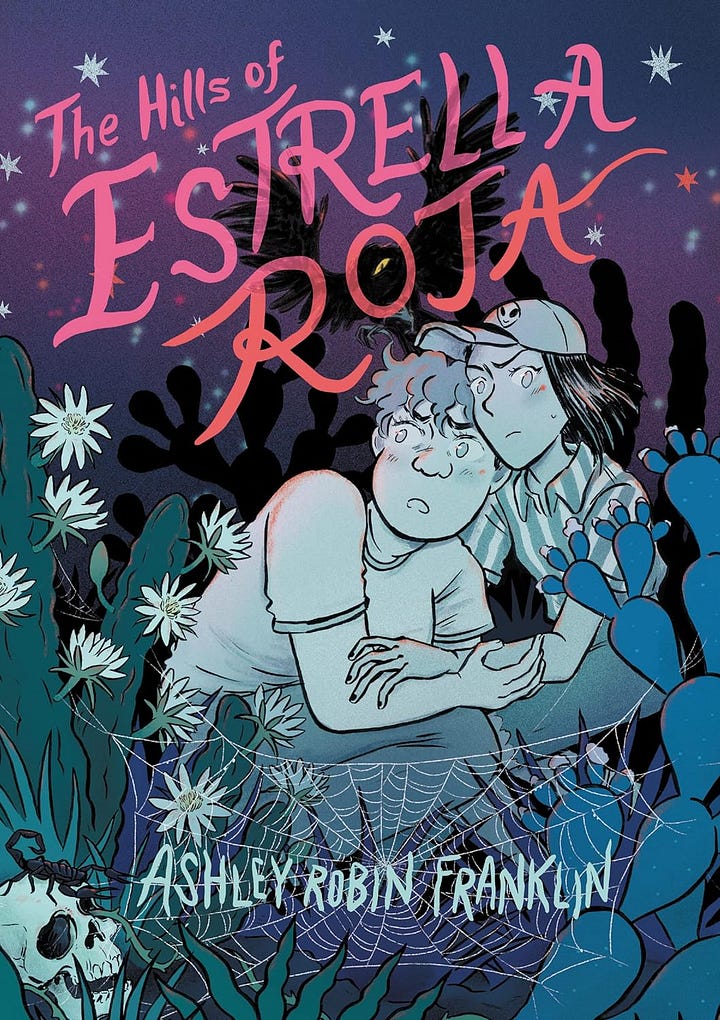
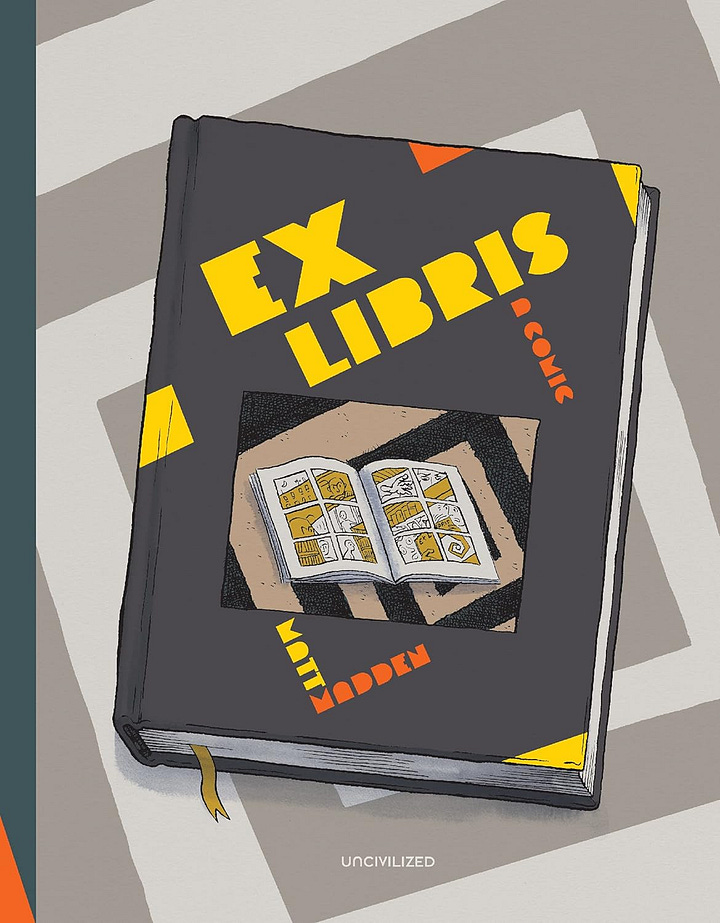

Clockwork Curandera by David Bowles and Raúl the Third
A steampunk reimagining of Frankenstein set in colonial Mexico — but with more witch owls. Like, a lot more witch owls.
When Cristina Franco, an apprentice shaman in the Republic of Santander, is killed by witch owls, her brother Enrique can’t let her go, so he brings her back to life via a combination of forbidden alchemy and engineering. Cristina is now part human, part machine — and considered an abomination in her country. Still, she vows to use her new abilities to protect Santander from attack, which means tracking down and defeating the witch owl coven plotting against it.
The Hills of Estrella Roja by Ashley Robin Franklin
Delightfully creepy and unapologetically queer, The Hills of Estrella Roja follows Kat Fields and Mari Castillo, two girls drawn to a relatively unknown Texas town with a history of witchcraft, strange sightings, and “devil lights.” As they grow closer to each other and to the dark legacy of Estrella Roja, they find themselves up against both monsters and tense family dynamics.
Ex Libris by Matt Madden
If you love meta-fictional writing — think Borges or Italo Calvino — Madden’s Ex Libris is the ideal introduction to graphic storytelling. The book revolves around a character trapped in a room with nothing but a futon and bookcase full of comics. As they flip through the books, they begin to suspect that the comics contain hidden messages — and a threat. The lines between fiction and reality, sanity and madness, begin to blur as the reader searches for the solution to their predicament in the comic books surrounding them. The New York Times calls Ex Libris “an existential locked-room mystery — ‘Memento’ with a bibliophilic twist” and praises its insider wit and satisfying solution.
21: The Story of Roberto Clemente by Wilfred Santiago
A must for anyone into sports and sports history, The Story of Roberto Clemente is a comic-style biography of the 1960s Latin American baseball star. Santiago’s story follows Clemente’s life from his early days in rural Puerto Rico through the highlights of his stunning career and into his private life and public mission off the field. Reviewers praise the story — Clemente is an inspiration, and Santiago does him justice here — but also praise Santiago’s illustration style, an ”artistic tour de force” of expressive and lyrical visual storytelling.


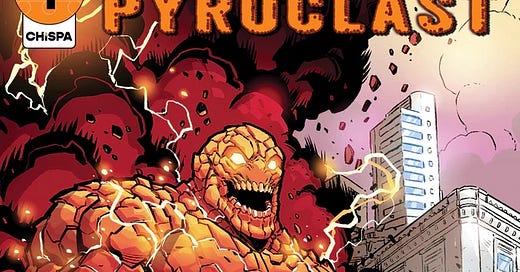


Really love the focus on so many queer/LGBTQIA+ comics out there! Who knew that such amazing overt storytelling can help so many young people nowadays to come out. Dan, image if the world was this way when we were in high school in central CT?